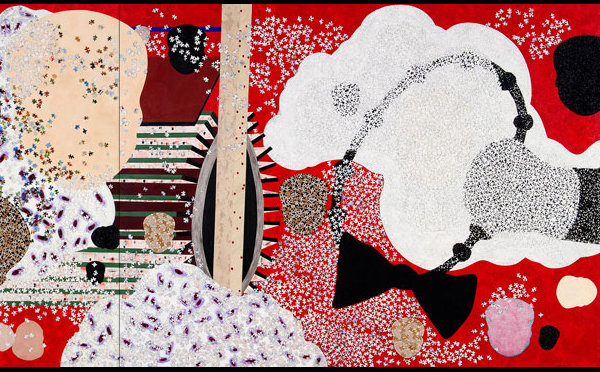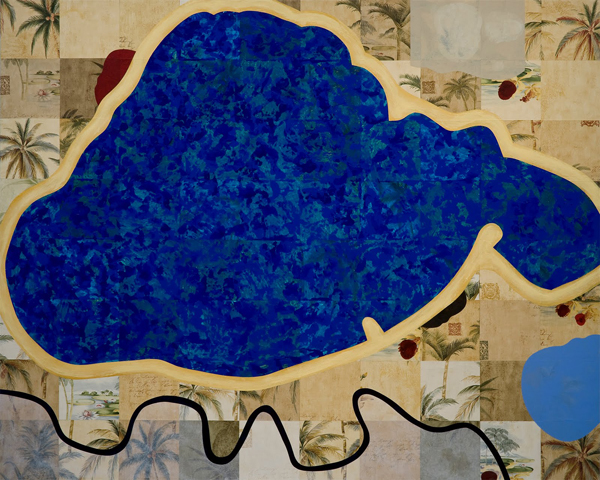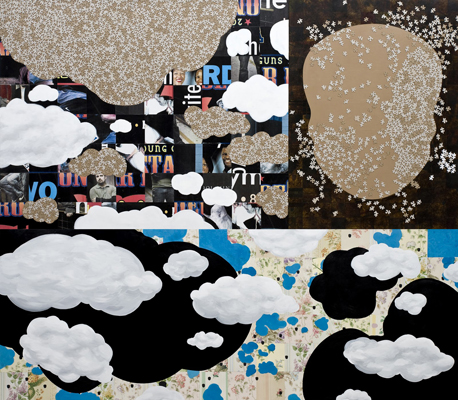Seeing Double: Juan Logan at the Ogden Museum of Southern Art

Juan Logan Sugar House (detail), 2011. Mixed media. Courtesy the artist and the Ogden Museum of Southern Art, New Orleans.
Juan Logan
Ogden Museum of Southern Art
925 Camp Street
February 13–July 20, 2014
Juan Logan’s large-scale paintings and sculptures plumb the personal and social potential of abstract forms and found objects. Though the allure of his surfaces seems to undermine the implications of suffering and inequality, the thick vibrant patches of paint and multicolored puzzle pieces that appear in many works are meant to suggest power relations and historical narratives that structure understandings of race in America. These visual associations might be lost were it not for the artist’s recurrent motif of a silhouetted head with a gently rounded afro. In Maybe By My Song, 2001, dimpled patches of rust-brown metal form the face, which contains a metal music box score at the center, while an array of metal strips becomes the halo of hair. Initially a self-portrait, the motif appears throughout the exhibition in a variety of sizes and colors. Found in black, white, and brown, the head becomes a signifier for identity in general. Alternating between no distinguishing features and exaggerated markings like repeated grotesque grins, it also implies the dehumanization inherent in racial caricatures.

Juan Logan, Lincoln Beach, 2008. Mixed media. Courtesy the artist and the Ogden Museum of Southern Art, New Orleans.
The “doubleness” of Logan’s symbolic universe is further apparent in the bow ties that appear in multiple paintings. According to the curatorial statement, the bow ties represent the banking industry, but they find a more obvious historical reference in the formal wear of minstrel shows. In The Sugar House, 2011, a menacing hand encased in a white cloud of puzzle pieces extends to offer a sparkly black bow tie. The work features a large gear shape in the background covered in lottery tickets, while what look like purple and red blood cells speckle cloud forms. It’s this mixed bag of references from a slave torture device to the health care industry that makes for a wobbly critique on equity and access in America today.

Juan Logan, Truth Be Told, 2011. Mixed media. Courtesy the artist and the Ogden Museum of Southern Art, New Orleans.
Logan is at his most convincing, however, in his exploration of the relationship between place, race, and power in his series on segregated beaches. Titled after beaches designated for African Americans during the Jim Crow era, Lincoln Beach and Chowan Beach, both 2008, make good sense of his materials. The head returns, looking more like a curving coastline, alongside mottled pool-like forms. All layered over patterned wallpaper, the works beautifully show how spatial relationships are shaped by privileges of race and class.



